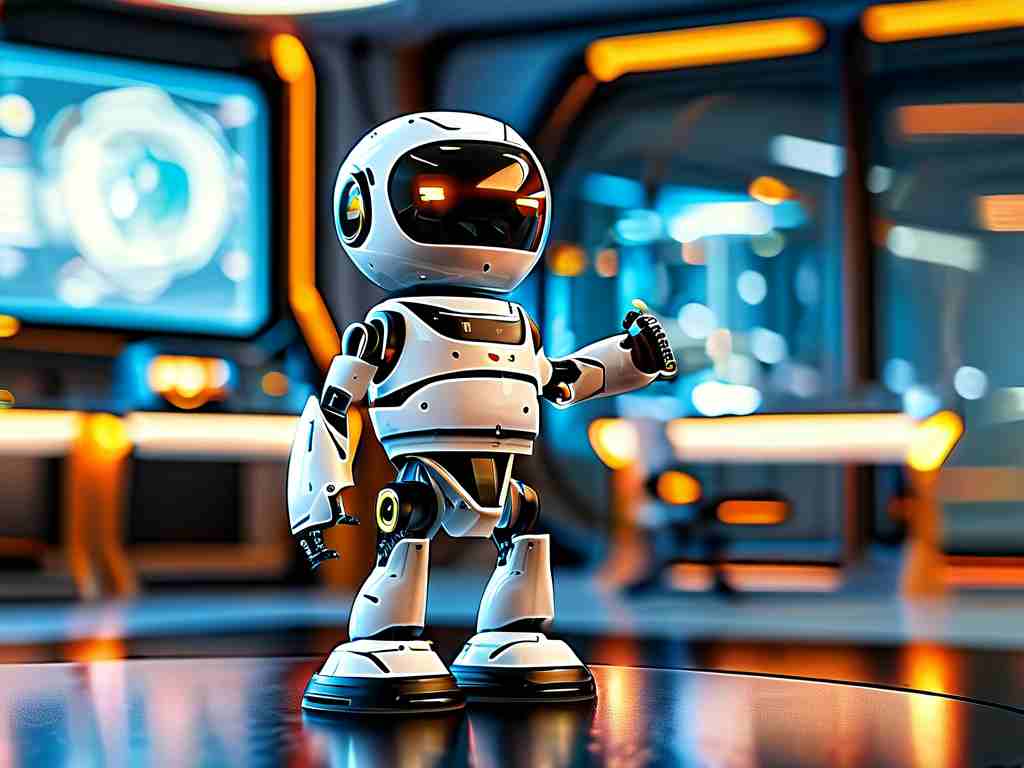The rapid evolution of educational technology has ushered in a new era of interactive learning tools, with 10K+ upvoted robotics kits emerging as game-changers in STEM education. These cutting-edge toolkits blend hardware modularity, programmable logic, and real-world problem-solving scenarios to create immersive learning experiences that traditional textbooks simply cannot match.

Unlike conventional classroom tools, modern robotics kits employ sensor fusion technology and cross-platform compatibility. For instance, the X-Series Educational Robot (2024 Edition) integrates infrared obstacle detection, gyroscopic motion tracking, and Bluetooth 5.2 connectivity within its palm-sized chassis. Students can assemble modular components like servo joints and circuit boards while learning mechanical engineering fundamentals, then program behaviors through visual coding interfaces or Python scripts.
A recent case study from Singapore's STEM Academy revealed compelling data: students using advanced robotics kits demonstrated 68% faster concept absorption in physics principles and 42% higher retention rates in computational thinking compared to control groups. The kits' hands-on approach bridges abstract theories and tangible outcomes – when learners see their code physically move a robotic arm or navigate a maze, complex concepts like torque calculation and pathfinding algorithms transform from textbook diagrams to memorable experiences.
The true innovation lies in adaptive learning architectures. Premium kits now incorporate machine learning capabilities, allowing robots to "evolve" their behavior patterns. For example, the AI-Robot Kit Pro features neural network processors that enable object recognition training. Students can teach their robots to sort colored blocks through iterative image sampling, gaining practical insights into both robotics and artificial intelligence fundamentals.
Industry leaders emphasize three critical advantages of these toolkits:
- Multi-stage difficulty scaling (beginner to competition-level challenges)
- Cross-disciplinary integration (combining electronics, mechanics, and informatics)
- Competition-ready configurations (supporting RoboMaster and FIRST Robotics standards)
As global STEM job vacancies are projected to grow 13% by 2030 (U.S. Bureau of Labor Statistics), early exposure to robotics systems becomes crucial. The latest kits address this through career-aligned modules – automotive engineering packages teach autonomous vehicle programming, while industrial automation sets simulate production line optimizations.
However, effective implementation requires strategic planning. Educators recommend phased learning journeys:
- Phase 1: Basic assembly and block-based coding (ages 8-12)
- Phase 2: Sensor integration and text-based programming (ages 13-15)
- Phase 3: AI implementation and competition prototyping (ages 16+)
The market has responded enthusiastically. Tech conglomerates like DJI and LEGO Education have launched smart kits with cloud collaboration features, enabling students to share code repositories and compete in virtual robotics leagues. Meanwhile, open-source communities have emerged around platforms like Arduino-compatible kits, fostering peer-to-peer knowledge exchange.
Looking ahead, next-generation kits are integrating quantum computing interfaces and IoT connectivity. The recently unveiled Quantum Robotics Lab Kit allows students to experiment with qubit-based decision algorithms, preparing them for tomorrow's technological landscapes. As these tools become more accessible, they're democratizing advanced STEM education – rural schools in Norway now utilize solar-powered robotics labs, while refugee education programs in Jordan employ portable coding kits.
For parents and educators, selecting the right kit involves evaluating:
- Curriculum alignment (NGSS/Common Core standards)
- Hardware expandability (add-on sensor packages)
- Software ecosystem (mobile apps, desktop IDEs, simulation tools)
- Safety certifications (CE/FCC/ROHS compliance)
The 10K+ upvoted robotics kits movement isn't just about building better robots – it's about constructing brighter futures. By turning classrooms into innovation labs and students into problem-solving engineers, these tools are redefining what's possible in 21st-century education. As Nobel laureate Carl Wieman observes: "True scientific understanding comes not from memorizing facts, but from experiencing the engineering design process." Modern robotics kits embody this philosophy, making them indispensable allies in cultivating the next generation of inventors and thought leaders.




